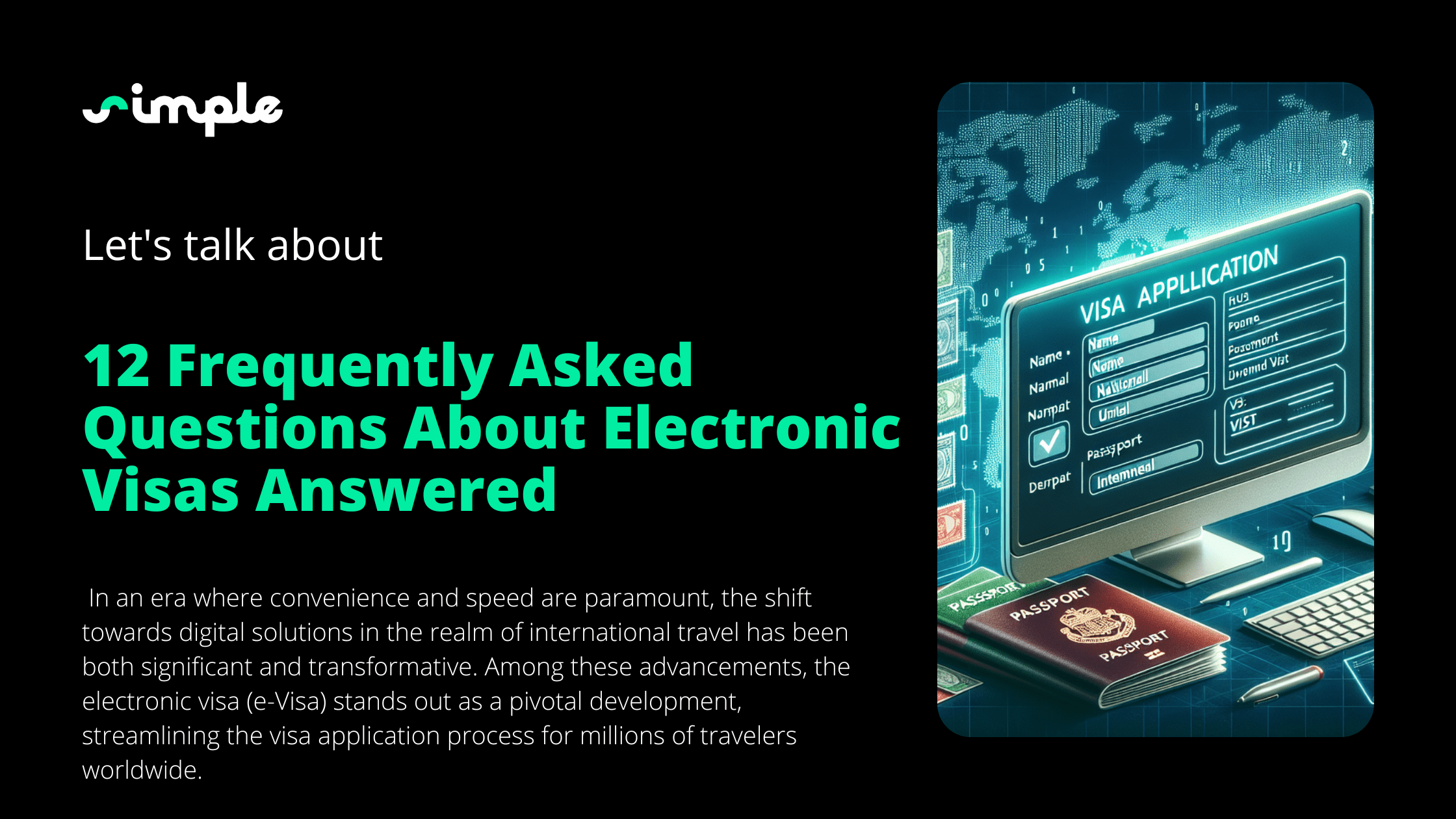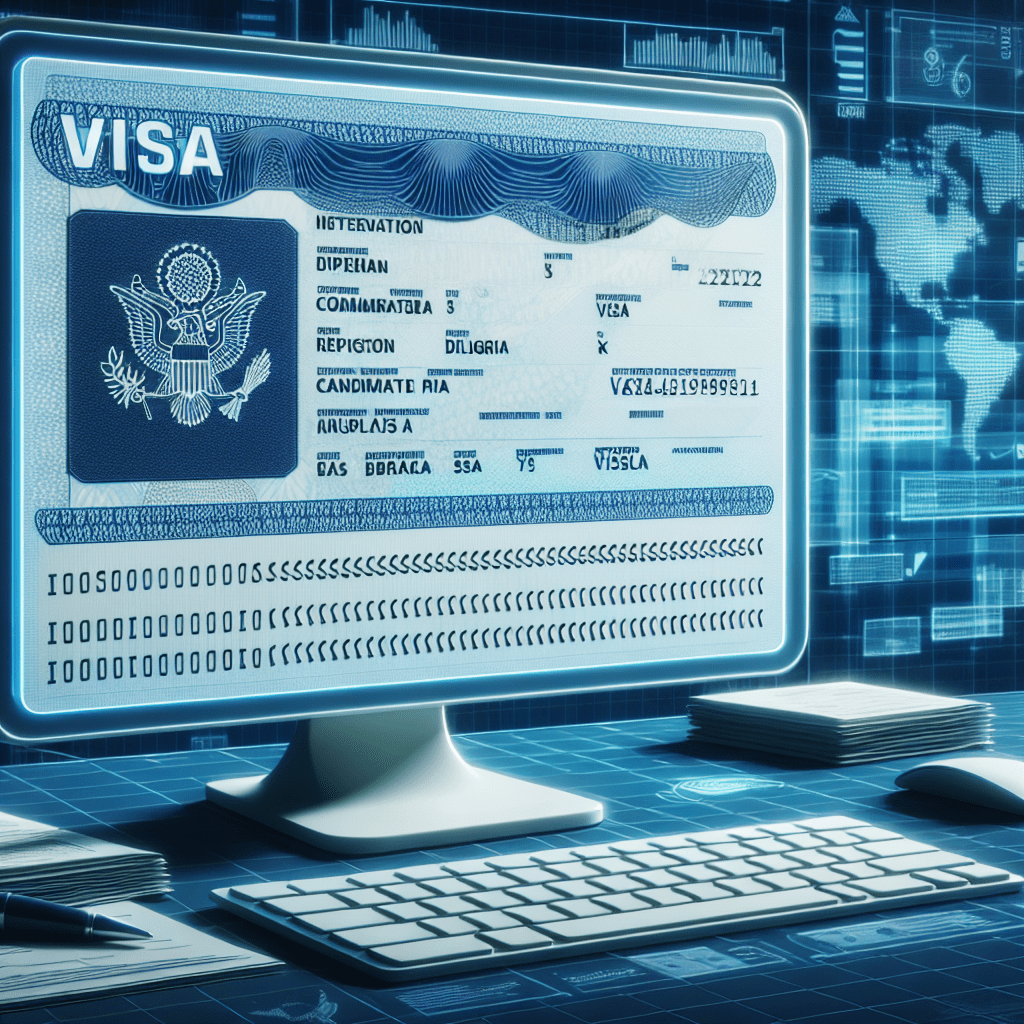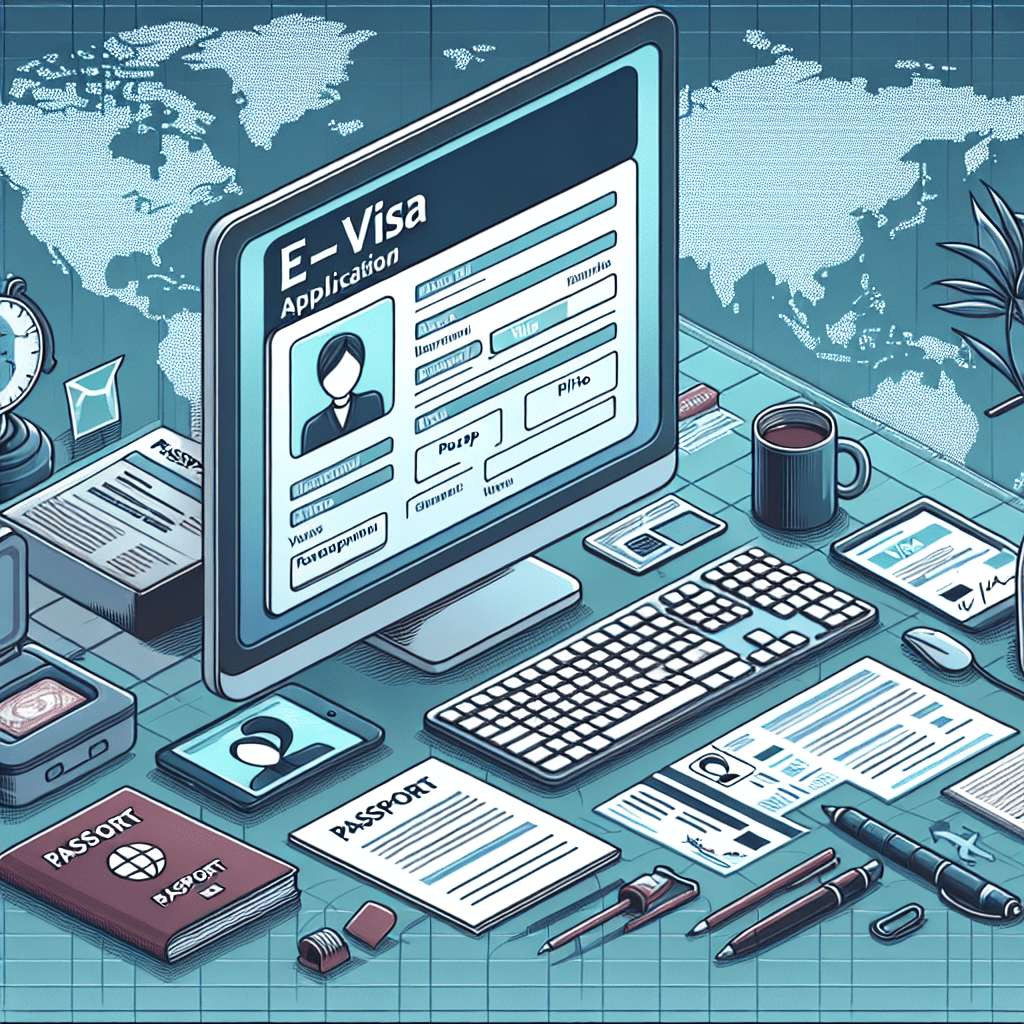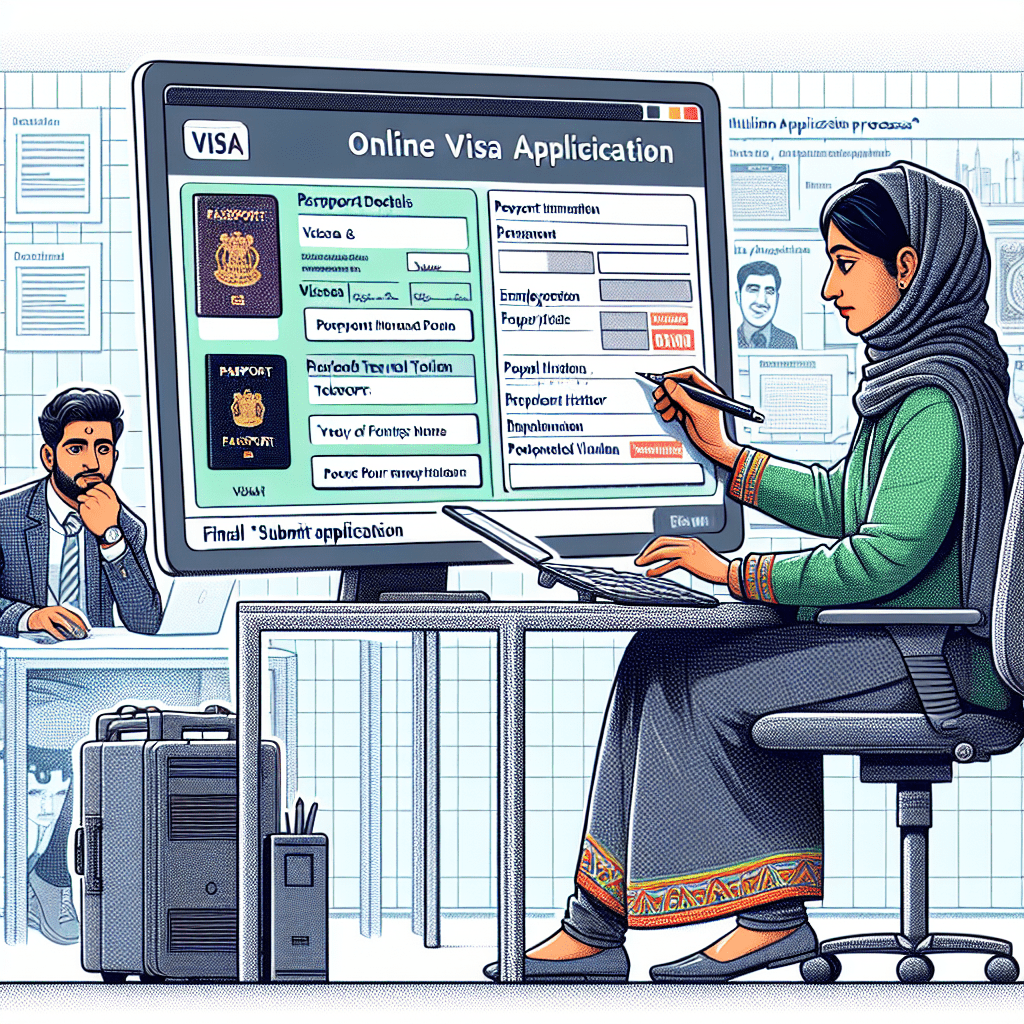12 Frequently Asked Questions About Electronic Visas Answered

In an era where convenience and speed are paramount, the shift towards digital solutions in the realm of international travel has been both significant and transformative. Among these advancements, the electronic visa (e-Visa) stands out as a pivotal development, streamlining the visa application process for millions of travelers worldwide. As the adoption of e-Visas continues to expand, so does the curiosity and, occasionally, the confusion surrounding their use. Recognizing the importance of providing clear, authoritative insights into this modern travel necessity, the following discourse aims to demystify the e-Visa through a detailed exploration of the most common inquiries posed by prospective users.
With the landscape of international travel constantly evolving, the need for up-to-date, reliable information has never been more critical. From understanding the basics of electronic visa applications to navigating the nuances of various countries’ requirements, this comprehensive guide is designed to equip travelers with the knowledge they need to embark on their journeys with confidence. By addressing 12 of the most frequently asked questions about electronic visas, this resource endeavors to clarify the process, dispel myths, and highlight the benefits of this digital approach to obtaining travel authorization.

Detailed Explanation of the Concept of Electronic Visas
Understanding the Basic Definition and Functionality of an Electronic Visa
An electronic visa, or e-Visa, represents a significant leap forward in the domain of international travel, offering a digital alternative to the traditional paper visa. This form of visa is obtained through an online visa process, allowing travelers to apply, pay, and receive their visa electronically. The e-Visa application is submitted through a digital visa service, which communicates directly with the traveler’s destination country’s immigration system. Once approved, the electronic travel authorization is linked to the passport number used during the application process, eliminating the need for physical documentation.
The functionality of an e-Visa is straightforward yet innovative. By utilizing a digital visa system, countries can streamline their visa processing, making it more efficient and accessible. Travelers benefit from the convenience of completing their visa online application from anywhere, at any time, provided they have internet access. This process not only saves time but also reduces the paperwork and in-person visits typically associated with visa applications.
Discussing the Advantages and Potential Drawbacks of Electronic Visas
The adoption of electronic visas comes with a host of advantages. For one, the online visa approval process is significantly faster than its traditional counterpart, with some e-Visas being processed within 24 hours. This efficiency is a boon for last-minute travelers and those with urgent travel needs. Additionally, the electronic entry permit system enhances security by allowing governments to pre-screen travelers before their arrival, thereby improving border control measures.
However, potential drawbacks exist. The reliance on digital technology means that travelers must have access to the internet and a digital device, which could be a barrier for some. Furthermore, technical issues with the online system, such as server downtime or glitches, could delay the e-Visa application and approval process. Lastly, not all countries offer an e-Visa option, and the requirements can vary significantly from one country to another, necessitating thorough research on the part of the traveler to ensure compliance with electronic visa requirements.

Breakdown of the Application Process for Electronic Visas
Complete Step-by-Step Guideline of How to Apply for an Electronic Visa
The process of applying for an electronic visa (e-Visa) is designed to be straightforward and user-friendly, thanks to the advancements in digital visa services. The first step in the e-Visa application process involves visiting the official visa portal of the destination country or a trusted digital visa system. Applicants must create an account, where they will fill out the visa online application form with personal, passport, and travel information.
After completing the application form, the next step involves uploading necessary documents. These may include a passport-sized photograph, a copy of the passport, and sometimes, proof of travel plans or accommodation. It’s crucial to check the electronic visa requirements for your destination country to ensure all necessary documents are prepared in advance.
Once the documents are uploaded, the applicant will proceed to the payment section, where the visa application fee is paid online. Following payment, the application is submitted for processing. Most digital visa services provide an application ID, which can be used for an e-Visa status check to monitor the progress of the application.
Discussion of What to Expect During the Application Process Including Processing Times, Associated Costs, and Related Details
The online visa process is generally efficient, with processing times varying from a few hours to several days, depending on the destination country and the type of visa applied for. Applicants should consult the specific electronic entry permit or e-Visa portal for accurate processing times. It’s advisable to apply well in advance of the intended travel date to accommodate any unforeseen delays.
Associated costs for an e-Visa application can also vary widely. Fees depend on the destination, visa type, and sometimes the applicant’s nationality. Payment is typically made through secure online platforms during the application process, and it’s important to note that these fees are usually non-refundable, even if the visa is not granted.
Throughout the visa electronic processing, applicants may receive updates via email or SMS. Once approved, the electronic travel authorization is sent directly to the applicant via email. It’s essential to print out this document or have a digital copy ready for presentation upon arrival, although some countries may have systems in place to verify e-Visas electronically. Always verify the latest entry requirements and recommendations from the destination country before departure.

Addressing Specific Questions and Concerns about Electronic Visas
Analysis and Response to Six of the Most Commonly Asked Questions about Electronic Visas
Electronic visas have revolutionized the way we approach international travel, yet they bring about a set of questions and concerns. One of the most frequently asked questions is regarding e-Visa eligibility. Eligibility criteria vary by country, focusing on the applicant’s nationality, the purpose of visit, and the duration of stay. It’s essential to check the specific requirements on the official digital visa service platform of the destination country.
Another common inquiry is about the security of the online visa process. Applicants can rest assured that reputable digital visa systems employ robust security measures to protect personal and financial information. However, it’s crucial to apply through official government or recognized service websites to avoid scams.
The duration of the electronic travel authorization’s validity is also a point of confusion. The validity period depends on the destination country and can range from a few days for transit visas to several months or even years for tourist visas. Always verify the validity period and ensure it covers the intended stay.
Applicants often wonder about the processing time for an e-Visa application. While many e-Visas are processed within a few days, it’s advisable to apply well in advance of the travel date to account for any delays or additional documentation that may be required.
The cost of an e-Visa application is another frequent question. Fees vary widely depending on the destination, visa type, and sometimes the applicant’s nationality. All fees are typically outlined during the digital visa application process.
Lastly, travelers sometimes ask if an e-Visa guarantees entry into the destination country. It’s important to understand that an e-Visa is a form of pre-approval to travel, but the final entry decision is made by immigration officials at the point of entry based on the presented documents and any other entry requirements.
Analysis and Response to Another Six of the Frequently Asked Questions on the Subject Matter
One common question is whether an e-Visa can be extended. Extensions depend on the country’s immigration policies, and travelers should contact the relevant immigration authority or embassy for guidance on extensions or modifications to their electronic entry permit.
Travelers also inquire about what happens if their e-Visa application is denied. In such cases, applicants are usually informed of the reason for denial, and they may have the option to reapply or appeal the decision, depending on the country’s procedures.
Another question revolves around the need for a printed copy of the electronic travel authorization. While some countries may verify e-Visas electronically, it’s generally recommended to carry a printed copy or have a digital version available on a mobile device for presentation if required.
Concerns about how to check the status of an e-Visa application are also common. Most digital visa services offer an e-Visa status check feature, where applicants can enter their application ID to view the current status of their application.
Questions about the possibility of obtaining an online tourist visa for multiple entries are frequent as well. The availability of single or multiple entry e-Visas varies by country, and this information is typically specified during the e-Visa eligibility and application process.
Finally, travelers often seek information on how to receive updates or notifications about their e-Visa application. Most digital visa systems provide updates via email or SMS, and applicants are encouraged to check their application status online for the most current information.

Conclusion
In the ever-evolving landscape of international travel, the advent and adoption of electronic visas represent a significant leap towards simplifying the complex web of global mobility. The shift from traditional paper-based processes to a streamlined, digital visa application system underscores a broader trend towards digitization in all facets of life, including travel. Electronic visas offer a practical solution to the age-old challenges of visa procurement, marrying convenience with efficiency in a way that aligns with the digital habits of today’s travelers. The relevance of e-Visas in the modern travel context cannot be overstated, as they facilitate smoother travel planning and execution, allowing travelers to focus more on the experience of travel itself rather than the administrative hurdles that precede it.
The discourse surrounding electronic visas, as explored through the detailed analysis of common questions and concerns, aims to provide a comprehensive understanding of this digital travel document. The intention has been to offer transparent and complete answers to the myriad of queries that prospective travelers may have regarding e-Visas. It is hoped that this exploration has illuminated the e-Visa process, making it more accessible and less daunting for those looking to venture abroad. However, the world of international travel and visa regulations is one of constant change and complexity. As such, travelers are encouraged to seek out the most current information and not hesitate to reach out with more questions. The journey towards a seamless travel experience is ongoing, and the dialogue about electronic visas and their impact on travel is an important part of that journey.